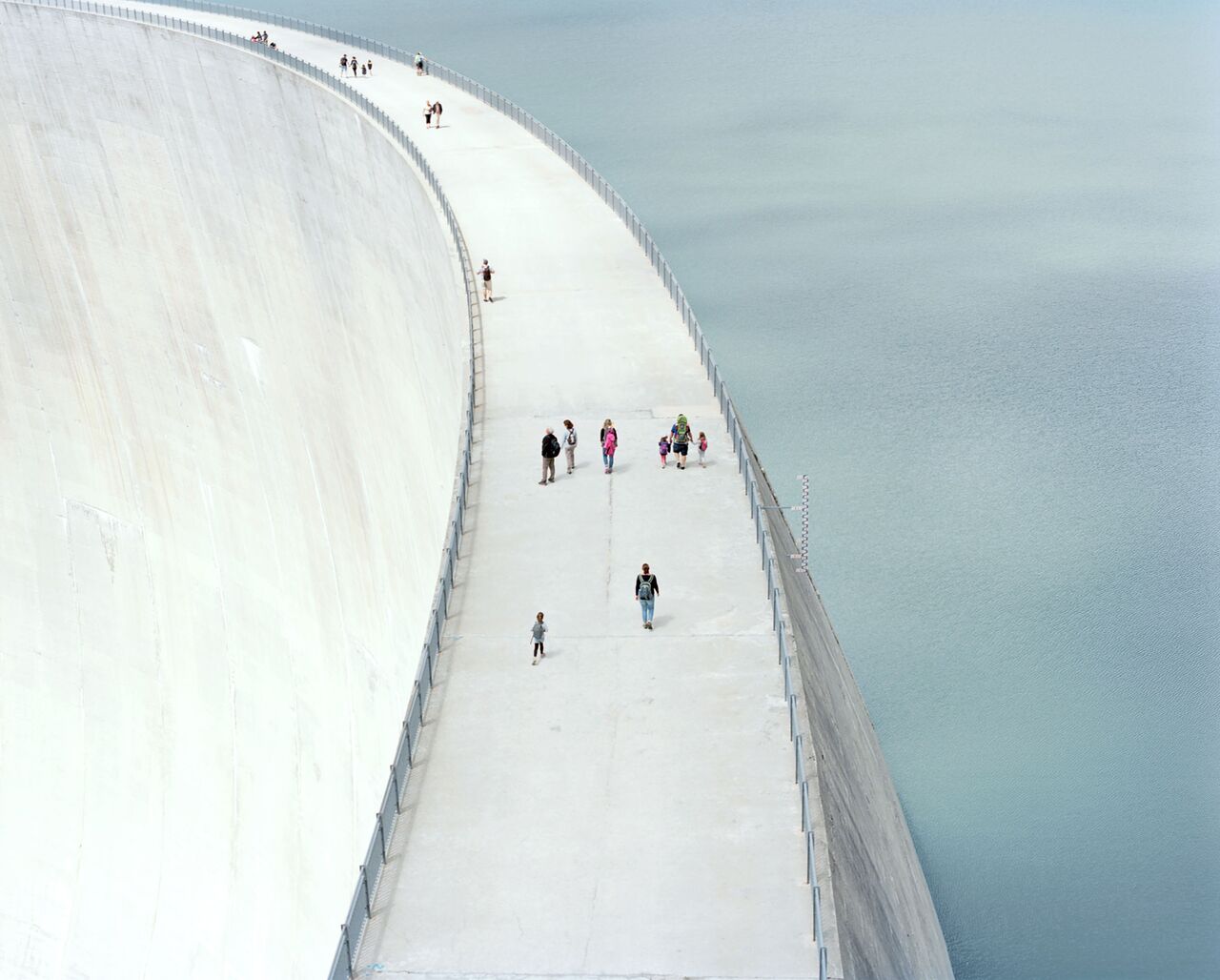Switzerland,
endowed with the Alps and thousands of lakes, is a global leader in
sustainability. Hydroelectric dams, such as the one shown here at Lac
d’Emosson in southern Valais, have supplied most of the nation’s
electricity for about 50 years. That share will probably increase after
voters in 2017 approved a law that will phase out nuclear plants and
increase the use of renewable energy, including hydropower.

▲
Lac d’Emosson, on the French border, had its first dam in 1925. The
590-foot arch dam standing today, completed in 1973, is part of one of
Europe’s biggest hydroelectric projects. Visitors can tour the structure
and the archosaur tracks preserved at a geological site nearby.

▲
Lac d’Emosson, on the French border, had its first dam in 1925. The
590-foot arch dam standing today, completed in 1973, is part of one of
Europe’s biggest hydroelectric projects. Visitors can tour the structure
and the archosaur tracks preserved at a geological site nearby.

▲
At 820 feet, Mauvoisin is the second-tallest dam in Switzerland and the
biggest arch dam in Europe. (Arch dams curve inward toward the water
they contain.) More than 1,800 workers built it over a decade, finishing
in 1958. The tunnels they used are open to tourists today

▲
At 820 feet, Mauvoisin is the second-tallest dam in Switzerland and the
biggest arch dam in Europe. (Arch dams curve inward toward the water
they contain.) More than 1,800 workers built it over a decade, finishing
in 1958. The tunnels they used are open to tourists today

▲
At 820 feet, Mauvoisin is the second-tallest dam in Switzerland and the
biggest arch dam in Europe. (Arch dams curve inward toward the water
they contain.) More than 1,800 workers built it over a decade, finishing
in 1958. The tunnels they used are open to tourists today

▲
At 820 feet, Mauvoisin is the second-tallest dam in Switzerland and the
biggest arch dam in Europe. (Arch dams curve inward toward the water
they contain.) More than 1,800 workers built it over a decade, finishing
in 1958. The tunnels they used are open to tourists today

▲
The 485-foot high dam at Lac de Moiry, directly east of Mauvoisin, sits
at an altitude of 7,377 feet above the village of Grimentz. Built in
1954, the dam feeds the Gougra storage power plant, harnessing the power
of the waters from Val d’Anniviers and the Turtmann Valley.

▲
The 485-foot high dam at Lac de Moiry, directly east of Mauvoisin, sits
at an altitude of 7,377 feet above the village of Grimentz. Built in
1954, the dam feeds the Gougra storage power plant, harnessing the power
of the waters from Val d’Anniviers and the Turtmann Valley.

▲
Located in the Italian-speaking canton of Ticino, the Luzzone dam is
best known for its exterior. The world’s highest artificial climbing
wall rises 541 feet and features more than 650 man-made holds. Fewer see
the interior of the dam, completed in 1963, and its pop art palette.

▲
Located in the Italian-speaking canton of Ticino, the Luzzone dam is
best known for its exterior. The world’s highest artificial climbing
wall rises 541 feet and features more than 650 man-made holds. Fewer see
the interior of the dam, completed in 1963, and its pop art palette.

▲
Located in the Italian-speaking canton of Ticino, the Luzzone dam is
best known for its exterior. The world’s highest artificial climbing
wall rises 541 feet and features more than 650 man-made holds. Fewer see
the interior of the dam, completed in 1963, and its pop art palette.

▲
Located in the Italian-speaking canton of Ticino, the Luzzone dam is
best known for its exterior. The world’s highest artificial climbing
wall rises 541 feet and features more than 650 man-made holds. Fewer see
the interior of the dam, completed in 1963, and its pop art palette.

▲
Located in the Italian-speaking canton of Ticino, the Luzzone dam is
best known for its exterior. The world’s highest artificial climbing
wall rises 541 feet and features more than 650 man-made holds. Fewer see
the interior of the dam, completed in 1963, and its pop art palette.

▲
Grande Dixence, 935 feet high, is the world’s tallest gravity dam.
Built by 3,000 men in the middle of the last century, today it’s part of
a complex of dams and reservoirs that produces enough electricity to
power about half a million homes.

▲
Grande Dixence, 935 feet high, is the world’s tallest gravity dam.
Built by 3,000 men in the middle of the last century, today it’s part of
a complex of dams and reservoirs that produces enough electricity to
power about half a million homes.

▲
Grande Dixence, 935 feet high, is the world’s tallest gravity dam.
Built by 3,000 men in the middle of the last century, today it’s part of
a complex of dams and reservoirs that produces enough electricity to
power about half a million homes.
No comments:
Post a Comment